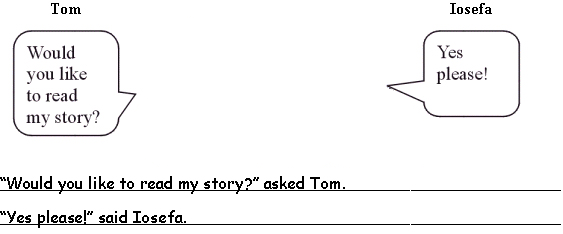Writing a conversation II

- use basic punctuation that is mostly correct, including punctuation of dialogue
|
|
Y4 (09/2001) |
|||
| Given | a) | Given | given | |
|
1 mark |
b) |
i) |
"I've nearly finished my project!" said Grace. |
easy |
|
1 mark |
c) |
i) |
"You look upset Jack. What's wrong?" asked Stacey. |
moderate |
|
1 mark |
d) |
i) |
"What is your book about?" asked Rawiri. |
easy |
NOTE:
- Award 1 mark each time the student has used speech marks to enclose only the words directly spoken, without adding any unnecessary speech marks.
- Award 1 mark each time the student has included appropriate punctuation between the direct speech and the words that indicate who has spoken, e.g.,!" said Grace. To get this mark the punctuation needs to be correctly placed inside the speech marks.
| Common errors | |
| b) - d) | 24-32% of students did not insert any speech marks for each example of direct speech. |
| b) - d) | 35-57% of students did not insert any punctuation to separate the words spoken from the speaker. Students were more likely to omit punctuation in those instances in which a comma was needed, e.g., For Amelia in b) (50%) and for Jason in d) (57%). |
| b) |
Amelia:
|
| d) |
Jason:
|

